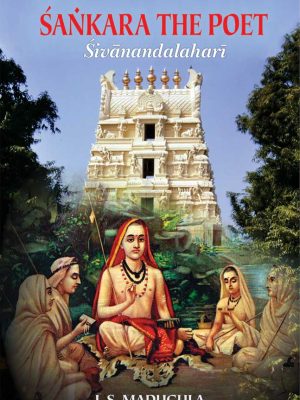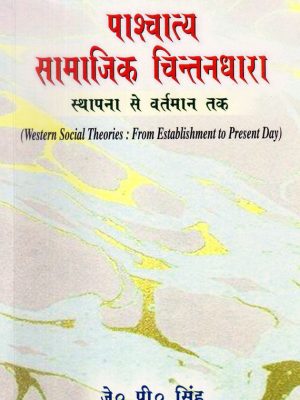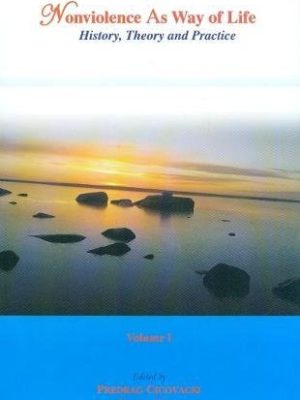
Motilal Banarsidass Publishing House
-
-
Harsha: Calcutta University Readership Lectures 1925
There are very few among the Rulers of India whose history is so rich in both contents and materials as the history of Harsha. His early life and career form the subject-matter of the Harsa-charita of Banabhatta, who wrote on Harsha as his court poet from his personal and intimate knowledge of his life and rule, and has given to Sanskrit literature one of its very few biographical works. The India of Harsha is also described by another eye-witness, the famous Chinese pilgrim, Yuan Chwang, to whose account reads like a Gazetteer in the scope of its inquiry and its wealth of details. To add to these two unique sources, we have several inscriptions of Harsha himself, a few of his great contemporary, Pulakeshin II of the Deccan, and the larger body of inscriptions of the Gupta and later kings of northern India, which together throw considerable light on the history of Harsa, especially on the interesting but imperfectly explored topic of the administrative system developed in that glorious age for the successful governance of extensive empires. The book embodies a course of readership lectures delivered by the late author in Calcutta University.
About the Author(s)
Radha Kumud Mookerji (1884-1964), was an Indian historian and a noted Indian nationalist during the period of British colonial rule. He obtained a doctorate from the University of Calcutta in 1905 and joined the newly established National Council of Education, teaching at the Bengal National College. After 1915, he embarked on a series of tenures at universities in Benares, Mysore, and Lucknow. He was awarded the Padma Bhushan in 1957 for his contribution to Public Affairs. Some of his published books include Indian Shipping: A History of Seaborne Trade and Maritime Activity of the Indians from the Earliest Times (1912), Ancient Indian Education: Brahmanical and Buddhist (1947), reprinted by Motilal Banarsidass (1960), Men and Thought in Ancient India (1912), reprinted by Motilal Banarsidass (1996), The Fundamental Unity of India, A History of India, Chandragupta Maurya and His Times, and Early History of Kausambi.
₹395.00 -
Principles of Composition in Hindu Sculpture: Cave Temple Period
The present study represents an approach to a hitherto unexplored aspect of Hindu sculpture. It deals with premedival sculpture concentrating exclusively on the question of composition have resulted from a careful analysis of the great sculpture of the Rock-Temples at Elura, Badami Mahabalipuram and others of the pre-medival period of the Rastrakuta, Calukya and Pallava Schools.
₹1,495.00 -
The Art of India Through the Ages: Traditions of Indian Sculpture Painting and Architecture: With 180 Illustrations in Colour and Monochrome
The Art of India Through the Ages: Traditions of Indian Sculpture Painting and Architecture: With 180 Illustrations in Colour and Monochrome
The visual arts of India have been underappreciated for centuries, despite the fact that Europeans were the first to discover and study their poetry and philosophy in India over a century ago. While ‘Sakuntala’ and ‘The Sermons of Buddha’ were regarded as literary masterpieces on par with those of Sophocles and Plato, the Indian arts were viewed as a visual supplement to the study of religion or anthropology in a faraway land, one that was enigmatic, sensual, and exotic.
The finding that Indian art has a suitable position in the history of art had still to be made. This book is the first of its kind in the field, therefore there is no need to worry about hyperbole.
As a result of researchers’ inability to demonstrate that Indian sculpture and building had the same artistic worth as Greek sculpture and mediaeval churches, this is what has occurred
The book’s 180 images serve as a visual tour of Hindu and Buddhist art in India.
Many of these pictures, many of which have never been seen before, were taken over the course of extended travels and years of intensive investigation This collection includes intricate temple structures, gracefully swaying bronze statues, magnificent rock-hewn representations of gods and monsters, murals, artistic reliefs, massive statues and busts, etc. It is likely that students will find the comprehensive images of buildings and sculptures (some of which were taken in extremely challenging conditions) as well as the eight colour reproductions of paintings, which augment the monochrome, photogravures, particularly valuable.₹2,500.00 -
Nonviolence As a Way of Life: History, Theory and Practice, Volume I-II
Nonviolence As a Way of Life: History, Theory and Practice, Volume I-II
This book is intended for those who are struggling to understand and confront the epidemic of violence in our world but are not familiar with the nonviolent alternatives. Among those alternatives is the tradition of ahimsa, which has been advocated and practiced by the Jains for the last twenty-five centuries. Inspired by the Jains, this collection of essays speaks with many voices personal reflections, scholarly studies, religious insights ñ to provide examples, guidance, and encouragement to those trying to cope with the violence that has become so prevalent. The essays should speak to a broad audience, but most especially to young people (late teens to early twenties), who are surrounded by violence practically from their birth and in virtually all aspects of their life: home, school, community, work, and media. The book will help them see: 1. What is involved in a nonviolent approach to the world, and how to apply it in various aspects of their daily lives. 2. That there are many of us out there ñ of different genders, race, professions, social classes, and religious affiliations, on every continent ñ who take nonviolence very seriously and try to live in accordance with its principles and values. 3. That there are many groups, institutions, and organisations that practice nonviolence and who can offer guidance, counsel, and help. The central aims of this book are to let those dealing with or surrounded by violence know that there is another way, and to encourage them to try to live in accordance with that way ñ the way of nonviolence.
₹1,500.00 -












